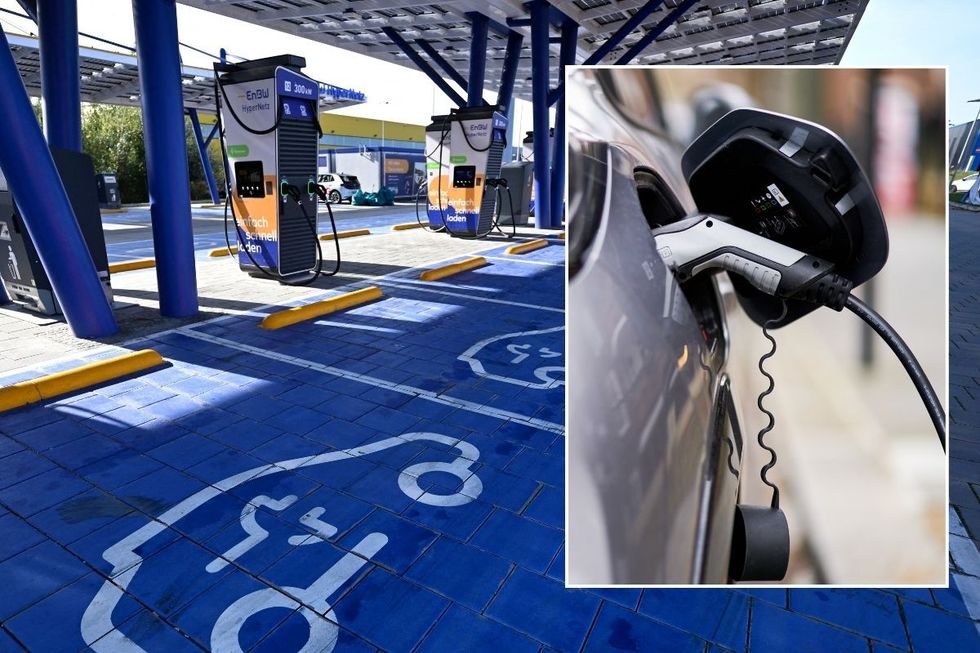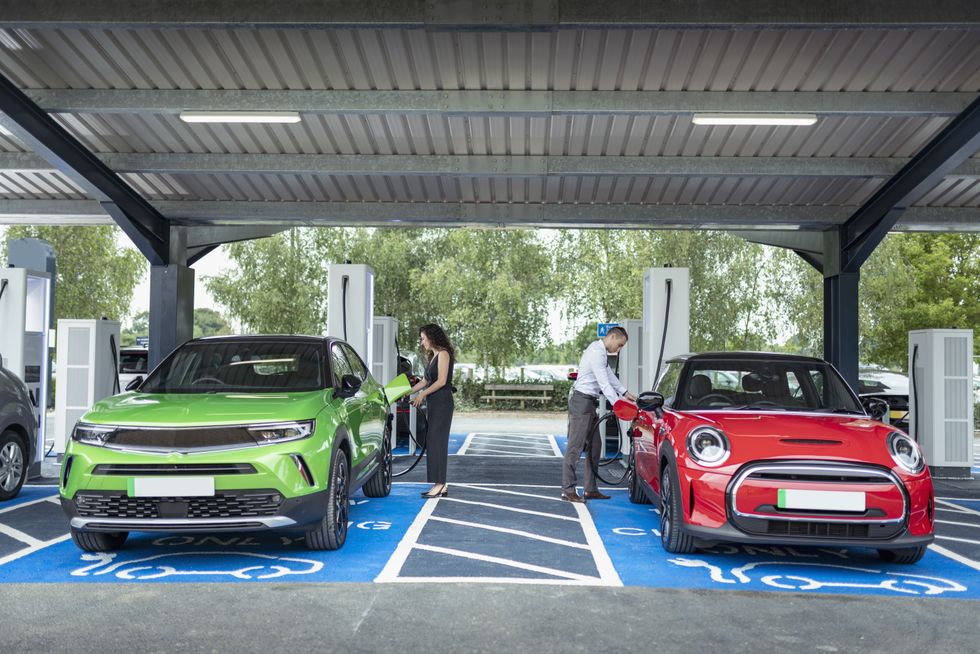WATCH: The Department For Transport announces measures to make it cheaper to install electric vehicles
DEPARTMENT FOR TRANSPORT
There are almost 75,000 public electric vehicle charging points across the UK
Don't Miss
Most Read
Trending on GB News
Experts are calling on the Government to do more to address issues around electric vehicle charging signage across the UK's road network.
Instavolt, the UK's largest provider of ultra-rapid charge points, is partnering with FairCharge to support the installation of clearer signposts on roads to support the uptake of electric cars.
It comes after data from the AA found that more than 50 per cent of drivers favour better signage for electric vehicles, especially along roads and motorways.
Motorists stated that this would help them have the confidence to switch to an EV by knowing that electric vehicle charging stations are more common than people think.
Do you have a story you'd like to share? Get in touch by emailingmotoring@gbnews.uk

Experts are calling for more charging signage to help drivers switch to electric vehicles
GETTY/PA
Instavolt and FairCharge have stated that the rollout of electric vehicle chargers is being hampered by red tape and antiquated rules.
Simon Smith, Chief Commercial Officer at InstaVolt, noted that improving signage around the UK was a simple and low-cost solution without the need for mega-projects.
He added: "Ultra-rapid EV charging is being rolled out at record pace, and clear signage is the missing piece to reassure drivers that going electric is not only practical but convenient.
"We're already engaging with OZEV and the Highways Agency and discussing how small but effective changes to existing processes can help create clear and visible signs to direct drivers to the thousands of charge points across the country."
Other suggestions from drivers included placing signs for EV charging sites on totem pole pricing boards at filling stations and having a universal sign.
Motorists also backed subtle changes to signage by including charging stations on built-in sat nav devices for petrol and diesel cars.
Popular apps like Google Maps and Apple Maps already allow drivers to choose to see where their nearest EV charging stations are, while also helping them plan their journey around the location of the chargers.
Quentin Willson, Founder of FairCharge, said: "We've worked with InstaVolt to repeatedly raise the issue of the lack of electric vehicle charging signage across the UK’s road networks and we’re pleased to see the AA, and non-EV drivers, supporting our calls.
"But we've been calling for change for two years now, without significant development. No wonder non-EV drivers believe there’s no charging infrastructure."
Data from Zapmap states there are 74,611 public charging devices around the UK across more than 37,000 different locations.
There is optimism in the motoring industry that installations will keep pace and meet the Government's target of having 300,000 public chargers installed by the end of the decade.
However, experts are calling for the Government and private industry to go further and prove to motorists around the UK that the charging infrastructure is suitable no matter where they live.
LATEST DEVELOPMENTS:
- Petrol and diesel drivers face sharp parking hikes from April alongside car tax raises with Labour blamed
- 2030 petrol and diesel car ban deadline could be confirmed as Transport Secretary meets with automakers
- Major car tax changes launching in weeks will see all 'new and existing vehicles' pay expensive costs

Drivers suggested that filling stations could show the cost of EV charging alongside petrol and diesel prices
GETTYJack Cousens, head of policy at the AA, said highlighting the EV charging network would give motorists more confidence in zero emission vehicles, calling it a "sensible upgrade".
Zapmap estimates that there are around 850,000 charge points installed at home or work where the majority of charging still takes place.








